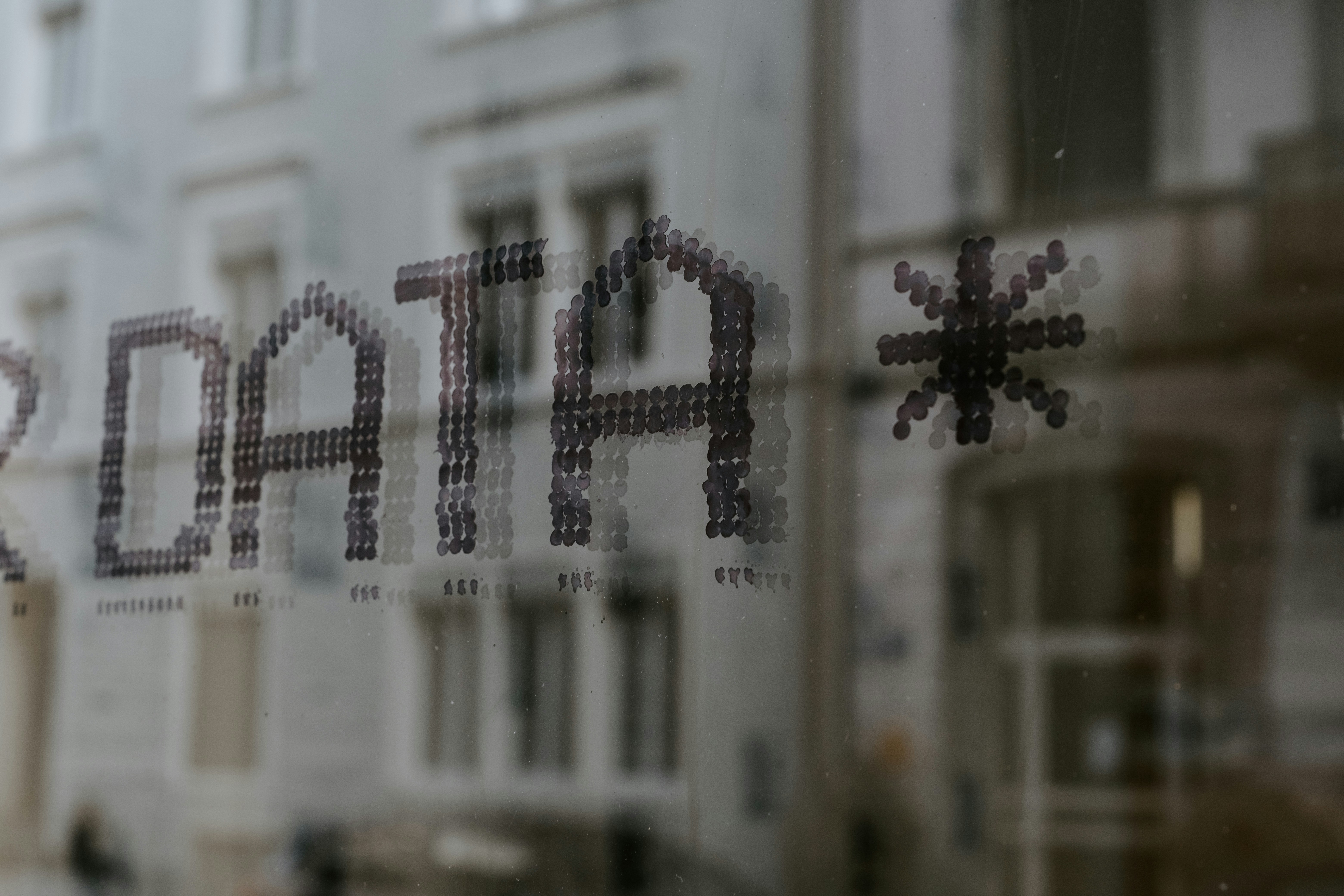
Create AI videos with 230+ avatars in 140+ languages.
I've seen companies spend months building comprehensive training modules, only to discover that completion rates mean nothing when learners are mentally checked out by slide three.
The numbers back this up. Gallup estimates that low employee engagement costs the global economy an estimated $8.8 trillion annually.
But this isn't just about productivity loss—it's about missed opportunities to genuinely help people excel at work.
What I've learned from working with hundreds of organizations is that the real cost isn't just the $8.8 trillion—it's the invisible friction.
I've seen companies where 95% of training videos remain passive and non-interactive, forcing learners to sit through content they can't pause, rewind meaningfully, or apply.
The biggest complaint I hear from L&D teams isn't budget constraints or time pressures. It's watching learner engagement drop off midway through a module, even when the content is solid.
Long PowerPoint presentations, text-heavy documents, and mandatory compliance training have become synonymous with boredom in most organizations.
But there's a way out.
Research shows that when training taps into cognitive, emotional, and behavioral engagement, it drives greater employee competence, satisfaction, and reduces turnover rates.
The key is choosing tools, formats, and designs that transform boring sessions into memorable learning experiences.
In this article, I'll show you exactly how to make training more engaging using nine practical strategies I've seen succeed across organizations ranging from 50-person startups to 10,000+ employee enterprises.
What makes employee training engaging?
From what I've observed working with global teams, training works best when it sticks, and sticking power comes from a mix of attention and emotional investment.
The neuroscience of attention and memory
Neuroscience research confirms that working memory and attention are tightly linked.
When too much information is introduced at once, the brain struggles to process and store it. Distractions, cluttered slides, or poorly timed delivery make that link fragile.
This aligns with findings from MIT's active learning research, which showed that failure rates drop by 50% when active methods replace lecture-based training.
But in my consulting work, I've found that the cognitive load principle is even more critical than the activity level—learners can be 'active' but still overwhelmed.
More recent data from Engageli's 2024 research shows even more dramatic results: active learning environments achieve 62.7% participation rates versus just 5% in traditional lectures, with learners scoring 54% higher on assessments and retaining 93.5% of information versus 79% in passive formats.
Why emotional connection drives retention
A study on authentic employee engagement found that learners respond better when training feels emotionally aligned with their role and purpose.
When learners feel safe to show up as they are, without having to fake interest or push through irrelevant material, they engage more deeply and remember more.
The fastest way to lose someone's attention is to load up passive content without giving them a reason to care.
The solution? Anchor lessons in real examples, use a conversational tone, and keep delivery varied.
The hidden psychology behind training engagement
When I analyze training programs that consistently achieve 90%+ completion with strong retention, they all balance three psychological principles:
This is why traditional "death by PowerPoint" fails so spectacularly. It violates all three principles simultaneously.
The role of learning styles and delivery formats
Learners can thrive in completely different environments. The VARK model breaks this down into four primary styles: Visual (seeing), Auditory (hearing), Reading/writing (text-based), and Kinesthetic (doing).
Here's what this looks like in practice: Your sales team might need to see the demo (visual), hear the objection handling (auditory), reference the pricing sheet (reading/writing), and practice the pitch (kinesthetic)—often within the same 15-minute session.
The mistake I see is trying to create separate tracks for each style instead of layering multiple modes into a single, cohesive experience.
A balance of synchronous and asynchronous content, such as live workshops mixed with recorded modules, lets people engage exactly how they prefer.
This blended learning approach also makes it easier for them to pause and review when needed.
I've found video to be exceptionally adaptable here. It supports visual online course design, works across hybrid teams, and can be updated and reused at scale.
With AI video, translating for different languages or tweaking role-specific content becomes far less time-consuming.
9 practical steps to make your training more engaging
Throughout my work helping organizations transform their training effectiveness, I've developed a framework that consistently delivers results.
Whether you're building from scratch or improving existing courses, these strategies create training that learners actually value and remember.
1. Set clear goals and expectations early on → Create learner buy-in from the first minute
Goal-oriented learners maintain engagement throughout training sessions.
Opening your program with an explicit definition of learning objectives gives participants a roadmap for success.
Show them the "why" behind each module.
Preview concrete outcomes they'll achieve, specific skills they'll develop, or problems they'll solve after completing the training.
This upfront clarity creates buy-in and maintains motivation even when material becomes challenging.
I recommend the 'outcome preview' technique: Start each session by showing learners a 30-second preview of exactly what they'll be able to do after completing the training.
For example, 'By the end of this module, you'll handle a difficult customer complaint using our three-step de-escalation process, and you'll see me demonstrate it with a real scenario.'
This creates what psychologists call 'desirable difficulty'—learners know the challenge ahead and feel motivated to master it.
Visual roadmaps and progress indicators help learners track advancement to maintain momentum during complex content. This clear structure sets expectations from the start.
2. Try video-based learning with AI to scale engagement → Create professional content in minutes, not weeks
Many people think video is the biggest bottleneck—slow to produce, problematic to update, and nearly impossible to localize.
That's no longer the case, and this is where an AI video tool like Synthesia become incredibly useful.
Instead of spending weeks coordinating with subject matter experts for recording sessions, I help clients create professional training videos in hours.
The real advantage isn't just speed—it's iteration. When learners provide feedback about a confusing section, you can update and republish the same day rather than waiting months for the next recording session.
What makes this format so engaging is the sense of presence it creates. Learners lean in when content feels tailored, timely, and easy to follow. With AI avatars delivering key messages in over 140 languages, the experience becomes both scalable and personal.
One client I worked with was spending $15,000 per module for professional translation and re-recording. Using AI video with instant translation capabilities, they reduced that to under $500 while maintaining consistency across 12 languages.
More importantly, when they needed to update a compliance module, they regenerated all language versions in 90 minutes instead of waiting 6 weeks for vendor schedules.
For global teams, this has been a significant improvement.
I've helped clients streamline their training material preparation, accelerate content creation, and maintain consistency across regions.
3. Mix up the format: Use interactive elements → Turn passive viewers into active participants
According to research from Engageli, interactive learning environments show 13 times higher learner talk time and achieve 93.5% knowledge retention compared to 79% in passive formats.
Multiple cognitive processes activate simultaneously when learners engage actively: attention sharpens, reasoning develops, and memory strengthens through this approach.
I recommend implementing these in stages based on production capacity and impact.
I've seen teams try to implement everything simultaneously and burn out their production capacity. Start with phase 1, measure engagement lift, then expand.
4. Choose AI avatars to create emotional connection → Build rapport through authentic digital presence
There's something powerful about being "spoken to" by someone who looks engaged.
Synthesia's AI avatars exhibit nuanced facial expressions, gestures, and vocal tones that align with emotional context, fostering authentic connections with learners.
I've worked with global teams who struggled with training consistency across regions. One client reported that their Asia-Pacific team finally felt 'spoken to' rather than 'translated for' in their training materials.
For organizations wanting even more authentic connection, Synthesia's Personal Avatar feature lets you create a digital version of actual subject matter experts.
I've seen this work particularly well for executive communications or specialized technical training where learners want to hear from a specific person, but that person's schedule makes traditional recording impossible.
In virtual training, body language and tone are often missing. But these avatars help reintroduce nuance and build rapport that learners pick up on instinctively.
Synchronized speech with appropriate non-verbal cues simulates genuine human interactions, effectively overcoming the sterile feel of digital training programs.
5. Use microlearning for better knowledge retention → Break complex topics into digestible chunks
For topics with many moving parts, microlearning makes everything more manageable. One-to-three-minute chunks prevent learner overwhelm while supporting better focus.
According to recent research, microlearning supports encoding and retrieval by minimizing extraneous load, especially when visuals and text are used together.
Another study found that learners retain up to 30% more when lessons are spaced out and delivered in shorter bursts.
But here's what the research doesn't tell you: the sweet spot for microlearning isn't just 1-3 minutes—it's creating content that can be consumed in the time between meetings.
I call this 'transition learning,' and it's incredibly effective for busy professionals.
For example, instead of a 45-minute module on objection handling, create five 3-minute scenarios showing different objection types.
Sales reps can watch one before a call, immediately apply it, then watch the next one later. This just-in-time pattern achieves 30% higher application rates than traditional block training.
6. Design training that reflects real-world tasks → Bridge the gap between learning and doing
When learners ask, "How does this apply to me?" the training itself should provide the answer. Embed authentic scenarios into as many sessions as possible.
Walkthroughs show learners exactly what to expect, while decision-tree challenges create safe spaces for exploring consequences.
Consider who you're designing for—support teams might work through mock service tickets, product managers could practice customer demos, and emerging leaders need realistic conversations to develop their skills.
I once worked with a client who spent $200K on a gamified training platform that achieved 15% completion rates because they used generic scenarios instead of situations their employees actually encountered.
When we rebuilt the training with real customer complaints and actual product issues, completion rates jumped to 85%.
Problem-solving exercises that mirror actual job tasks prepare learners for immediate application and allow them to build confidence in a safe learning environment.
7. Design for inclusion from the start → Make training accessible to everyone
Beyond format and interactivity, there's a foundational element that many training programs overlook until it becomes a compliance issue:
One area where I see training programs fail is accessibility.
It's not just about compliance—inclusive design improves engagement for everyone. When I help teams implement AI video training, we always:
- Enable captions by default (not just for accessibility, but because many learners prefer them)
- Use clear, conversational language that works across different English proficiency levels
- Ensure visual elements support rather than distract from the core message
- Test with diverse learner groups before full rollout
Tools like Synthesia make this easier by automatically generating captions in multiple languages and allowing you to adjust pacing without re-recording content.
In my experience, most learners now access training primarily on mobile devices, so optimize for small screens from the start.
8. Personalize the learning experience where possible → Make every learner feel the content was built for them
When training feels generic or impersonal, learners check out. Personalization keeps them engaged by making the experience feel relevant from the start.
Branching paths allow learners to navigate based on their role, experience, or learning goals.
Choose-your-own-adventure formats create similar flexibility through different pathways. Adaptive technologies fine-tune this personalization further—they adjust difficulty automatically while recommending additional resources based on performance.
According to recent research, adaptive learning systems improve retention and application. Mastered material gets skipped, keeping learners engaged with challenging content.
Even subtle choices—like role-specific examples or customized reflection prompts—make a noticeable difference. When learners see themselves in the content, they stay with it longer.
9. Incorporate learner feedback loops and analyze performance data → Let learners shape their own training experience
One of the best ways to improve training sessions is by asking learners what helped and what didn't. Use quick surveys, open comment boxes, or embed discussion forums where people can reflect and share casually.
These responses help you identify what to clarify, what to drop, and what to reinforce.
If a quiz consistently trips people up, or if a scenario doesn't feel realistic, learner input will tell you.
Most LMS platforms show you completion rates and quiz scores, but that's like judging a movie by how many people stayed until the credits.
What you really need is behavioral data: where do learners pause and rewatch? Where do they skip ahead? When do they stop entirely?
With Synthesia's video analytics, I can see that learners consistently replay the 45-second mark in a compliance module—telling me that section needs clearer explanation, not that learners are engaged.
Synthesia's video analytics show you exactly where learners drop off, replay sections, or skip ahead.
I use this data to identify the 'friction points' in training—usually where concepts aren't explained clearly or examples don't resonate.
This granular feedback is impossible to get with traditional training formats.
When you review, adapt, and retest based on learner behavior, your training becomes easier to use and easier to remember.
Start where learners are, not where you think they should be
After working with hundreds of training programs, here's what I know for certain: engagement isn't about entertaining learners—it's about respecting their time, intelligence, and real-world challenges.
The strategies I've shared work because they're grounded in how people actually learn and what they need to succeed in their roles. But here's the most important insight: start small, measure everything, and iterate quickly.
Your first AI-powered training video doesn't need to be perfect. Your initial interactive scenario doesn't need every possible branch.
What matters is creating something more engaging than what you have today, learning from how learners respond, and building from there.
If you're starting from scratch, I recommend beginning with Synthesia's microlearning template—it's structured for 3-5 minute modules with built-in knowledge checks and works across industries.
The cost of disengaged training isn't just wasted time—it's missed opportunities to genuinely help people excel at work. And that's worth getting right.
About the author
Strategic Advisor
Kevin Alster
Kevin Alster is a Strategic Advisor at Synthesia, where he helps global enterprises apply generative AI to improve learning, communication, and organizational performance. His work focuses on translating emerging technology into practical business solutions that scale.He brings over a decade of experience in education, learning design, and media innovation, having developed enterprise programs for organizations such as General Assembly, The School of The New York Times, and Sotheby’s Institute of Art. Kevin combines creative thinking with structured problem-solving to help companies build the capabilities they need to adapt and grow.

Frequently asked questions
How can I increase engagement in employee training without raising production costs?
The most effective way to boost training engagement without increasing costs is to leverage AI-powered video creation tools that transform existing content into dynamic, interactive formats. Instead of expensive studio productions or hiring actors, you can create professional training videos in hours using AI avatars and automated translation features, reducing production costs by up to 80% while maintaining quality.
Start by converting your highest-volume training modules into short 3-5 minute video segments, then add simple interactive elements like knowledge checks or decision points. This approach not only saves money on production but also increases retention rates by 30% compared to traditional formats, making your existing training budget work harder while delivering better results for your learners.
How can I make my training sessions more interactive for adult learners?
Adult learners engage best when training mirrors real workplace challenges and gives them control over their learning experience. Create branching scenarios where learners make decisions that affect outcomes, use role-playing exercises with AI avatars to practice difficult conversations, and incorporate quick polls or knowledge checks every few minutes to maintain active participation.
The key is starting simple with quick wins like instant feedback quizzes, then gradually adding more complex elements like collaborative problem-solving or full simulations. Research shows that interactive learning environments achieve 93.5% knowledge retention compared to 79% in passive formats, and learners in active environments show 13 times higher engagement levels, making the investment in interactivity worthwhile for long-term learning success.
How does using AI video and avatars with Synthesia help create more engaging training at scale?
AI video technology transforms the traditional bottleneck of video production by enabling teams to create professional training content in minutes rather than weeks. With AI avatars that can speak in over 140 languages and display natural facial expressions and gestures, you can deliver consistent, personalized training experiences across global teams without coordinating complex recording schedules or managing translation vendors.
The real advantage comes from the ability to iterate quickly based on learner feedback. When analytics show that learners consistently replay a specific section, you can update and republish that content the same day, maintaining engagement through relevance and timeliness while scaling your training program to reach thousands of employees with culturally appropriate, localized content.
How do I measure whether my training is engaging beyond completion rates?
True engagement measurement requires looking at behavioral data that reveals how learners actually interact with your content. Track where learners pause and rewatch sections to identify concepts that need clearer explanation, monitor drop-off points to find friction in your training flow, and analyze time spent per module to spot pacing issues or content overload.
Modern video analytics platforms provide granular insights showing exactly when learners disengage, which sections they skip, and what content they revisit most frequently. Combined with post-training assessments, learner feedback surveys, and real-world application rates, these metrics paint a complete picture of engagement that helps you continuously improve your training effectiveness rather than just celebrating high completion percentages.
How can I quickly localize and update training content for global teams without re-recording?
AI-powered video platforms eliminate the traditional barriers to training localization by automatically translating content into multiple languages while maintaining consistent messaging and quality. Instead of spending $15,000 per module for professional translation and re-recording, you can generate all language versions in under 90 minutes, ensuring global teams receive culturally relevant training without delays.
The ability to update content instantly becomes especially valuable when regulations change or products evolve. Simply edit the script, regenerate the video in all required languages, and republish across your learning management system, keeping your global workforce aligned and informed while reducing localization costs by up to 95% compared to traditional video production methods.











.png)


